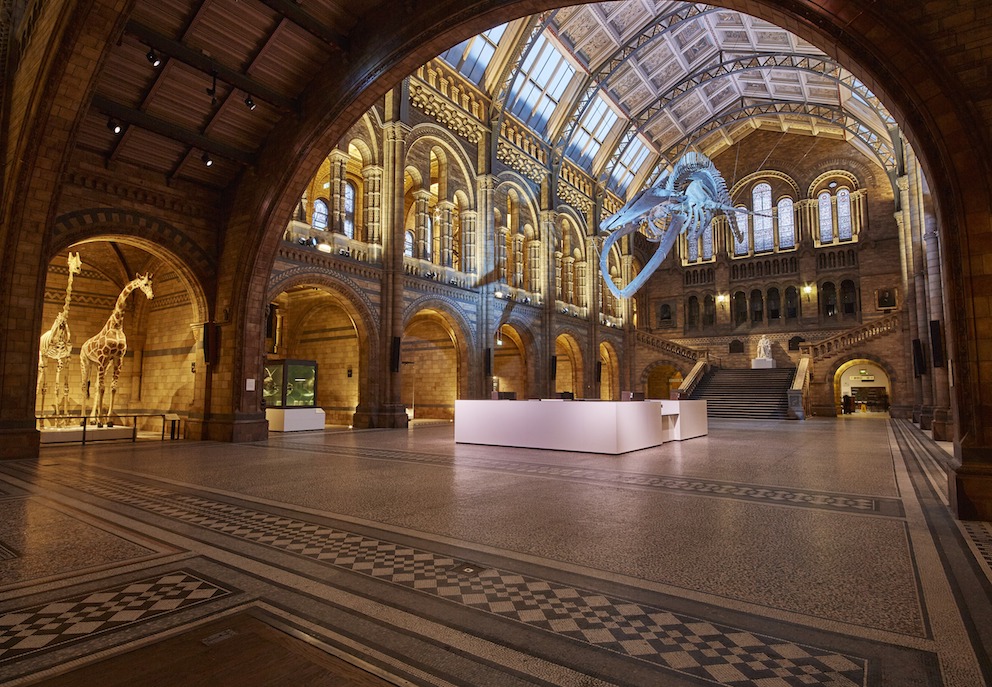The Natural History Museum has unveiled the new star of its re-imagined Hintze Hall, at the start of the biggest transformation in its 136-year history.
A stunning 25.2 metre real blue whale skeleton suspended from the ceiling now takes centre stage in the spectacular space – giving visitors the opportunity to walk underneath the largest creature ever to have lived as they enter.
Blue whales were hunted to the brink of extinction in the 20th century, but were also one of the first species that humans decided to save on a global scale.
The Museum has named the female blue whale Hope, as a symbol of humanity’s power to shape a sustainable future.
It is estimated that in the 1800s there were approximately 250,000 blue whales across the world’s oceans. Decades of commercial hunting during the 20th century drove the species to the brink of extinction, with just 400 thought to be left in 1966. That year, in London, the world decided to legally protect blue whales from commercial hunting. Since then the population of blue whales has steadily grown to its current level of around 20,000 – the start of a viable population.
The skeleton now on display in Hintze Hall is from a whale stranded in 1891 in Wexford Harbour, Ireland, 10 years after the Museum opened in South Kensington. It was bought by the Museum and first went on display in the Mammal Hall in 1934, where it was suspended above a life-size model of a blue whale. Curators, conservation teams and engineers worked on the whale skeleton for months – mostly in an off-site warehouse due to its enormous size – preparing it for its new home.
Hope will be joined in Hintze Hall by hundreds of new specimens, chosen to celebrate the wonder and beauty of the natural world, from the origins of the universe, to the story of evolutionary diversity. Ten star specimens are in ground floor alcoves – known as Wonder Bays, including a 4.5-billion-year-old meteorite, a Mantellisaurus dinosaur skeleton, giraffes and a blue marlin.
Sir Michael Dixon, Director of the Natural History Museum, said: “Putting Hope, at the centre of the Museum, between living species on the West and extinct species on the East, is a powerful reminder of the fragility of life and the responsibility we have towards our planet.”
From CSNo17 August 2017


